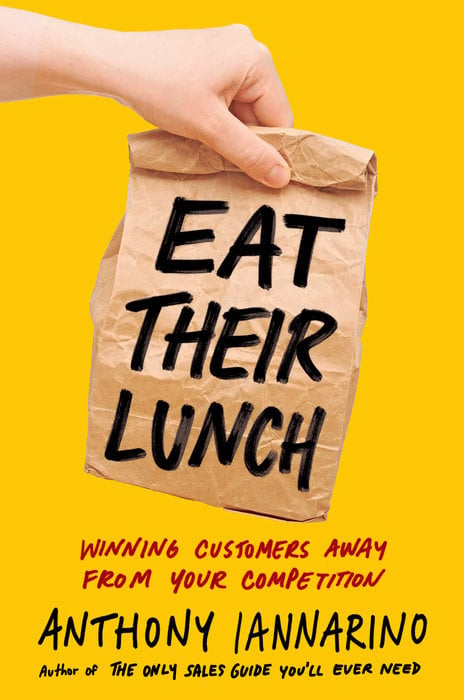The way we prospect now is to use campaigns, a series of communications over time, designed to result in a meeting. Campaigns generally use multiple mediums, and when done well, communicate a message that proves you can create value for your prospect. They are also much more effective than calling your dream client once a quarter (too long between communications) and once a day (too frequent contact). One of the challenges is determining how many targets one can manage in a campaign. Here is how you might decide how many targets you can handle at once.
Too Many Prospects — Too Infrequent
Some companies have a broad offering that allows them to target much larger populations. If you provide office supplies, high-speed internet bandwidth, or technology, your value proposition is general enough that you will have a vast number of prospects. More prospects is not always better than fewer.
One of the challenges of having too many prospects is that it is more difficult to communicate frequently enough. For many companies and their salespeople, it’s more difficult to communicate in a meaningful way. Because your list is so extensive, it can be difficult to discern where to focus your attention. Right now, most salespeople and sales organizations have chosen to use email to communicate with infrequent messages that do nothing but test to see if anyone raises their hand to ask for help. The infrequency and lack of value in the communication limits the value of this approach to only those who are presently dissatisfied enough to consider a change.
There are better ways to prospect, starting with segmenting and targeting some population of prospects. Regardless of how you segment your list, whether by industry vertical, potential revenue, type of challenge you solve, geography, or some combination of factors, you increase your likelihood of communicating frequently enough by building a campaign. When done well, you increase the value of the communication as well, improving your overall results in scheduling meetings.
Too Few Prospects – Too Frequent
Some industries have very few real prospects. The number of potential clients is small and finite. Where this is true, prospecting can be difficult, and the small number of opportunities can cause people to call too frequently. The difference between being persistent and being a nuisance is the value you create in an interaction, be it a phone call or a meeting.
When the population of prospects is low, increasing the value of communication becomes one of the variables. While you can call the same person every week and ask them for the same meeting they refused last week, without creating any real value, you are going to wear out your welcome quickly. Another variable in your control is how many contacts you are pursuing (I have a bias towards pursuing one connection at a time, but that is based only on my experience in one industry. In other sectors, it can make sense to pursue multiple stakeholders, especially where decisions will require some level of consensus).
You can improve your prospecting campaign by increasing the value of communication and the value of the meeting. There are industries where updating your few prospects on the changes to your offering is enough, but in more cases, you need to offer greater value to obtain a meeting. An executive briefing that educates your prospective client about the opportunities and threats likely to impact their business over a relatively short time is better than a “check-in meeting.” A mostly update of critical metrics and advice about what they mean for the future is also useful. (Neither of these two ideas are exclusive to companies with few prospects. You can learn more about this strategy in Eat Their Lunch: Winning Customers Away from Your Competition).Win customers away from your competition. Check out Eat Their Lunch
The Purpose of Prospecting
The only goal of prospecting is to gain a meeting. The single desired outcome of that meeting is creating a new opportunity. Because you are working to compel change, you improve your communications when you work to capture mindshare. You provide the lens through which your dream client views their business, their challenges, and what they should do differently in the future (another concept you will find in Eat Their Lunch).
The more valuable your communication, the more likely you are to gain a meeting. You are also going to be able to communicate more frequently when you have something worth your dream client’s time and attention.
Much of the communication from salespeople that reaches my inbox or my phone fails “the relevancy test,” as it is mostly about the company and only rarely ever communicates anything of real value. Some of the salespeople and companies that talk with me believe that more frequent communication will improve their results when they need to enhance the value of their message and the importance of a conversation. A few communicate such value that I always read what they send me, and they shape the way I think about how I might improve my outcomes. An even smaller population uses multiple communications in different mediums.
The Number of Prospects
To improve the efficiency of your prospecting, build campaigns that allow you to maintain a communication cadence that helps you capture mindshare and earn the right to a meeting. The number of prospects you can manage is more than you think, but you need a well-constructed campaign and discipline to make it work.
To increase your effectiveness, you need to increase the value of your communications. The content must help people even if they never do business with you if it is to get attention and position you as someone who can help. Because this is a long game, you can manage more contacts, especially if you happen to have a long sales cycle.
If you want to improve your prospecting results, match your campaigns to the number of prospects, increasing the frequency and the value if the communication for large numbers, and massively increasing the worth for a small number of clients.











